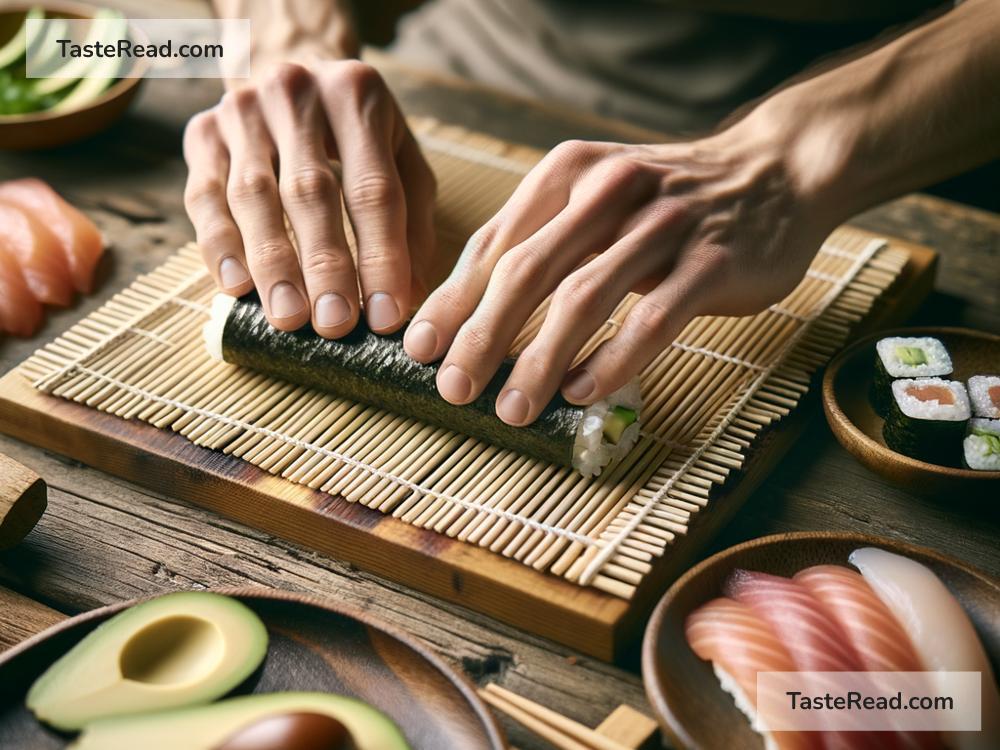Exploring the Art of Sushi Making at Home
Sushi: a simple word that evokes myriad images and tastes for different people. From the freshest slices of fish to perfectly seasoned rice, sushi is a Japanese dish that has captured the hearts (and stomachs) of food lovers around the world. But what if you could create this culinary masterpiece in your own kitchen? Let’s dive into the art of sushi making at home and how you can embark on this delicious adventure.
The Basics of Sushi
First things first, it’s essential to understand the core components of sushi. At its most basic, sushi consists of sushi rice (shari) and a topping (neta), which could be fish, seafood, or even vegetables. The beauty of sushi lies in the balance and harmony of its ingredients – the slightly vinegary taste of the rice contrasting with the freshness of the toppings.
Preparing the Sushi Rice
The foundation of great sushi lies in its rice. Sushi rice is short-grain Japanese rice mixed with a blend of vinegar, sugar, and salt. The key is to cook the rice to the right consistency – it should be sticky yet firm enough to hold its shape. Once cooked, gently fold in the vinegar mix, taking care not to mash the grains. Let it cool to room temperature before you start making sushi.
Choosing the Right Ingredients
The next step is sourcing your ingredients. If you’re using fish, it’s crucial to buy sushi-grade fish from reputable suppliers. This ensures that the fish is safe to consume raw. Popular choices include salmon, tuna, and yellowtail. For vegetarians, options like cucumber, avocado, and bell pepper make great fillings. Additionally, you’ll need nori (seaweed sheets), soy sauce, wasabi, and pickled ginger to complete the sushi experience.
Types of Sushi
There are various forms of sushi, and as a beginner, you might want to start with the easier types. Here’s a quick glance at some popular kinds:
- Maki: These are the rolled sushi wrapped in nori. They can be thin rolls (hosomaki), thick rolls (futomaki), or inside-out rolls where the rice is on the outside (uramaki).
- Nigiri: This type involves hand-pressed rice topped with a slice of fish or seafood.
- Temaki: Also known as hand rolls, these are cone-shaped seaweed wraps filled with rice and other ingredients.
The Art of Assembling Sushi
Making sushi is both an art and a science. It requires patience and practice. For maki, you’ll need a bamboo rolling mat covered with a sheet of nori. Spread a thin layer of rice on the nori, leaving space at the top. Lay your fillings across the rice, then roll it tightly, using the mat to help shape it. Nigiri requires you to shape a small amount of rice with your hands and gently press the topping onto it.
Presentation Matters
Part of the joy of sushi is its presentation. When you’re done making your sushi, take a moment to arrange it beautifully on a platter. Use garnishes like wasabi, pickled ginger, and perhaps some thinly sliced vegetables for color. Remember, we eat with our eyes first, so make your sushi feast a visual treat!
The Joy of Sushi Making
Sushi making at home is more than just preparing a meal; it’s an act of love and a way to connect with a rich culinary tradition. It may seem daunting at first, but with each roll and each slice, you’ll find yourself becoming more confident and creative. Invite friends or family members to join in, making it not just about the food but also about sharing experiences and creating memories.
Final Tips
- Practice Makes Perfect: Don’t worry if your first few attempts don’t look perfect. Sushi making is a skill that improves over time.
- Be Adventurous: Once you’ve mastered the basics, don’t be afraid to experiment with different fillings and techniques.
- Safety First: Always ensure your workspace is clean, and your ingredients are fresh and safe to consume.
Conclusion
Making sushi at home can be a rewarding and fun experience. It allows you to explore your culinary creativity while enjoying fresh, delicious sushi that satisfies not only your hunger but also your soul. So, gather your ingredients, roll up your sleeves, and embark on a delightful journey into the art of sushi making. Who knows? You might just discover a new passion.


